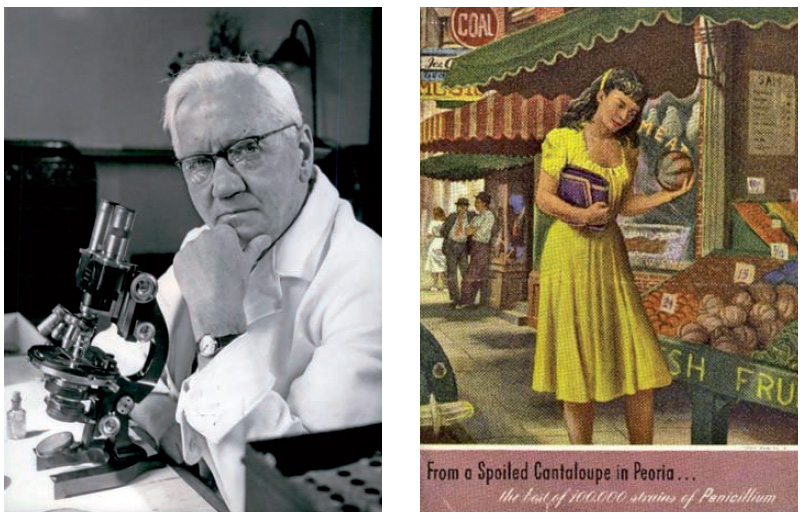
- London, end of July 1928. Scottish biologist, pharmacologist and botanist Alexander Fleming went on vacation, forgetting to pick up petri dishes with cultured bacteria, and in September, when he returned to Paddington's lab, the plates were shocked by the notatum Penicillium mushroom. And the staphylococci around them had died. In that well-known anecdote, Fleming discovered penicillin. But for the pioneer antibiotic to be effective, it had to be produced in large quantities. It was very difficult to get the penicillin out of the fungus and purify it.

In 1938, biochemists Ernst Boris Chain and Norman Heatley of the Oxford Institute of Pathology and Doctor Howard Florey began working to increase penicillin production. Without great results, they were forced to stop the activity. In 1941, the Second World War and the lack of resources led Chain and Florey to the United States, specifically to the laboratory of the Department of Agricultural Research of Peoria (Illinois).
Mary Hunt was working in that lab. We don't know much about him, who in 1980 lived and lived in Chicago or Arizona. In 1943, he was in charge of making special purchases for the laboratory; from store to store, in search of fruit, vegetables, dairy and wet meats. One day in June, he bought a melon with a yellowish mold. In the laboratory, he prepared the mold to be cut and examined, adding 72 on the label to the sample. Then, apparently, he split chunks of molten melon between his teammates and was too soft.
The melon chosen by Mary Hunt had a fungus that was Penicillium chrysogeum. Fleming was able to produce 200 times more penicillin than the fungi found (and 1,000 times more after improving the strain with ionizing radiation). In 1945 he was awarded the Nobel Prize in Medicine to Alexander Fleming, Ernst Boris Chain and Howard Florey. Mary Hunt, on the other hand, only got a bad reputation: It was later called Moldy Mary or Mary Lizundua.